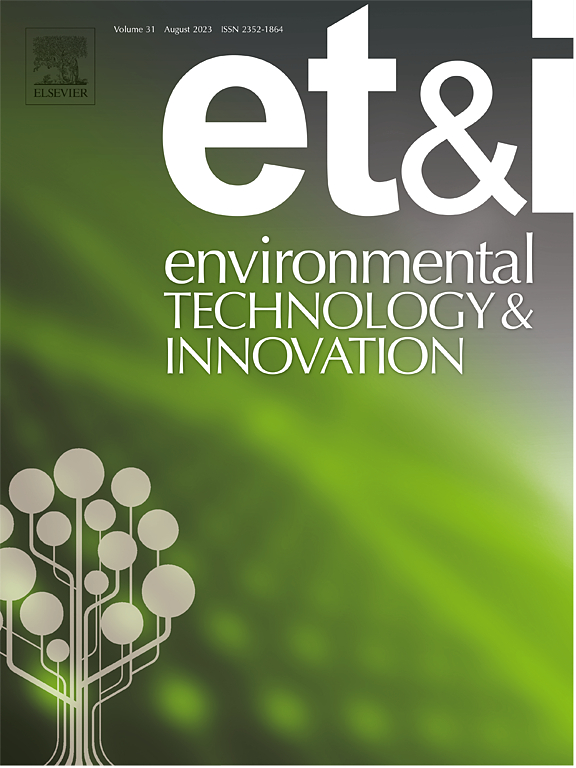Algorithms for source location source location and chemical oxygen demand concentration over time along the river
IF 6.7
2区 环境科学与生态学
Q1 BIOTECHNOLOGY & APPLIED MICROBIOLOGY
引用次数: 0
Abstract
The global use of freshwater has increased six-fold in the past 100 years and has been growing by about 1 % per year since the 1980s. Meanwhile, rapid urbanization, climate change, and inefficient water management have contributed to a 20 % decline in per capita freshwater availability in recent decades reducing the water resources even more. The scarcity of water in the coming decades is exacerbated by human actions, including thousands of accidental pollution spills and intentional illegal discharges into surface waters. To address this challenge, a Monitoring and Mitigation Framework (MMF) was developed to minimize damage from contaminant spills, identify contaminant sources in real time, and estimate Chemical Oxygen Demand (COD) flow concentration rates in real time. The MMF was specifically designed to detect environmental crimes, track companies responsible for contamination spills, and facilitate the scheduling of mitigation actions in coordination with law enforcement authorities for ongoing and future events. This real-time framework uses Inverse Estimation (IE) algorithms built with Artificial Neural Networks algorithms to detect contamination source location and estimate COD flow concentration at source location over time. This provides real-time evidence for identifying potential companies involved in environmental crimes according to local police of the Malaga City Council (Spain). Both algorithms were trained on a Learning Database build from over 13,000 simulations, and generated by an algorithm called Launching Multiple Scenarios algorithm also developed in this work. The MMF was developed and tested at Llobregat river (Barcelona, Spain), and it was considered 2621 test cases with different spill location and COD concentrations ranging from 0.1 to 80,000 mg/l. In those tests, IE algorithms were able to estimate COD concentration at the source with a mean absolute error (MAE) lower than 2.6 mg/l and a Mean Square Relative Error (MSRE) lower than 10 mg/l, correctly identifying the contamination source location in more than 85 % of cases.
水源定位算法水源定位算法和化学需氧量浓度随时间的变化
在过去的100年里,全球淡水的使用量增加了6倍,自20世纪80年代以来一直以每年1% %的速度增长。与此同时,快速的城市化、气候变化和低效的水资源管理导致近几十年来人均淡水供应量下降了20% %,这进一步减少了水资源。未来几十年,人类活动将加剧水资源短缺,包括数以千计的意外污染泄漏和故意非法排放到地表水中。为了应对这一挑战,开发了监测和缓解框架(MMF),以最大限度地减少污染物泄漏造成的损害,实时识别污染物来源,并实时估计化学需氧量(COD)流量浓度。MMF的专门目的是查明环境犯罪,追踪对污染泄漏负有责任的公司,并与执法当局协调,为正在进行和未来发生的事件安排缓解行动。该实时框架使用人工神经网络算法构建的逆估计(IE)算法来检测污染源位置,并估计污染源位置随时间的COD流量浓度。根据马拉加市议会(西班牙)当地警察的说法,这为识别涉及环境犯罪的潜在公司提供了实时证据。这两种算法都是在一个学习数据库上进行训练的,该数据库由超过13,000次模拟构建而成,并由一种名为启动多场景算法的算法生成,该算法也是在这项工作中开发的。MMF在西班牙巴塞罗那的Llobregat河进行了开发和测试,在不同的泄漏位置和COD浓度范围为0.1至80,000 mg/l的2621个测试案例中进行了测试。在这些测试中,IE算法能够以低于2.6 mg/l的平均绝对误差(MAE)和低于10 mg/l的均方相对误差(MSRE)估计源处的COD浓度,在超过85% %的情况下正确识别污染源位置。
本文章由计算机程序翻译,如有差异,请以英文原文为准。
求助全文
约1分钟内获得全文
求助全文
来源期刊

Environmental Technology & Innovation
Environmental Science-General Environmental Science
CiteScore
14.00
自引率
4.20%
发文量
435
审稿时长
74 days
期刊介绍:
Environmental Technology & Innovation adopts a challenge-oriented approach to solutions by integrating natural sciences to promote a sustainable future. The journal aims to foster the creation and development of innovative products, technologies, and ideas that enhance the environment, with impacts across soil, air, water, and food in rural and urban areas.
As a platform for disseminating scientific evidence for environmental protection and sustainable development, the journal emphasizes fundamental science, methodologies, tools, techniques, and policy considerations. It emphasizes the importance of science and technology in environmental benefits, including smarter, cleaner technologies for environmental protection, more efficient resource processing methods, and the evidence supporting their effectiveness.
 求助内容:
求助内容: 应助结果提醒方式:
应助结果提醒方式:


